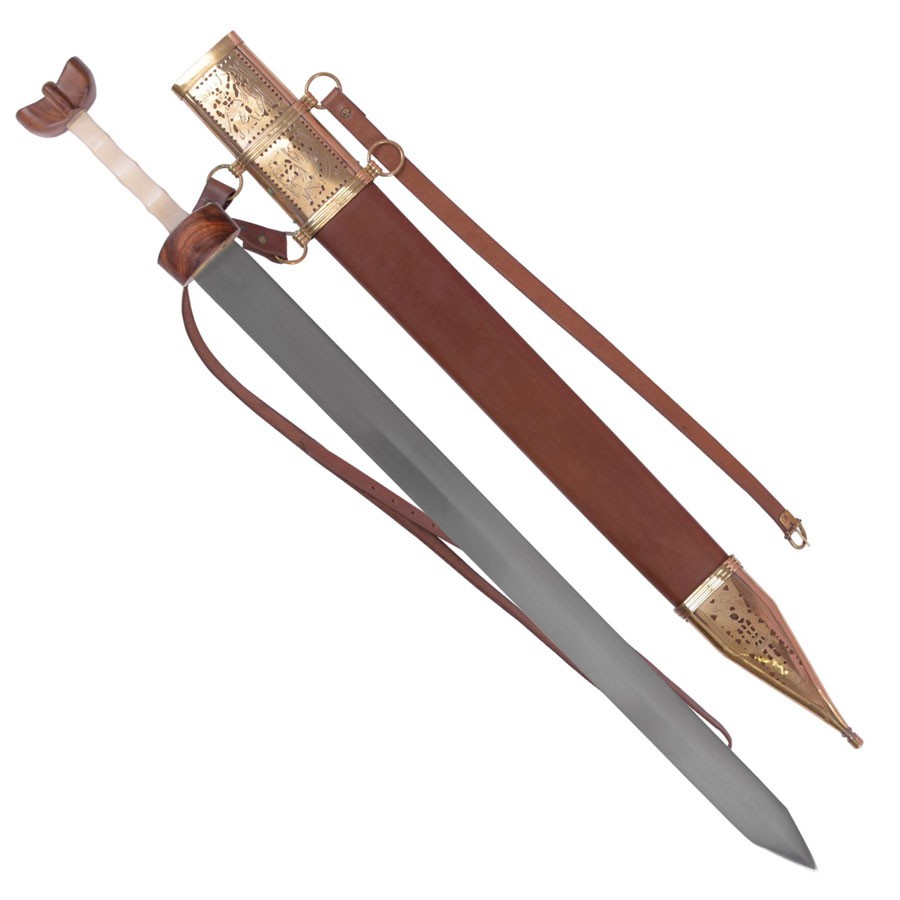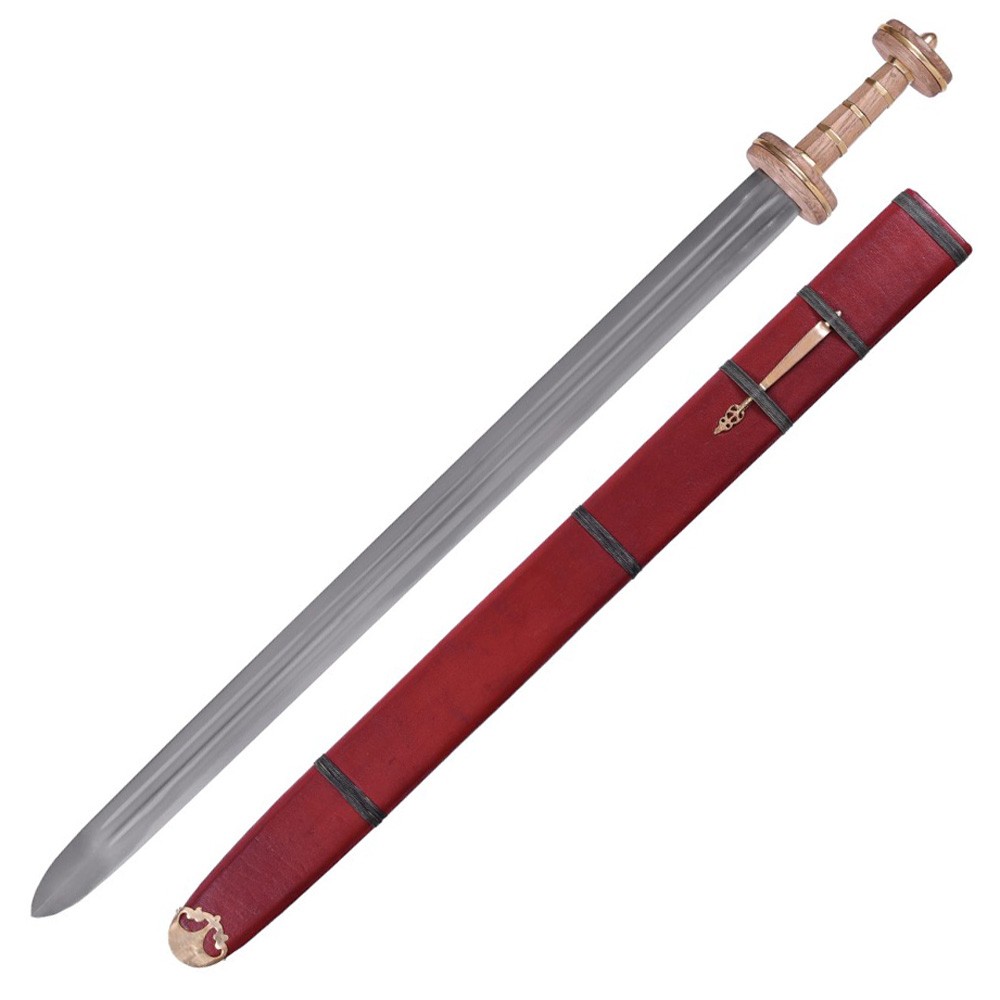What is a Spatha?
The Spatha is a historical long sword that played a fundamental role in the arsenal of the Roman Empire from the 1st to the 6th century AD. With its distinctive design and multiple uses in combat, the Spatha represents a significant advancement in the evolution of weapons of the time. Below, we will explore its characteristics, origin, and use within the Roman military context.
Features of the Spatha
- Length: Generally ranges between 75 and 100 centimeters, making it a notably longer sword than the Gladius, the traditional legionary sword.
- Design: The blade of the Spatha is straight, with a wide structure and often double-edged, providing effectiveness for both cutting and thrusting.
- Grip: Its grip is generally made of wood, elegantly carved and detailed with brass. This, in addition to the guard, ensures a better hold during combat.
- Scabbard: Its scabbard, made of wood and leather, includes ornamental brass elements, allowing easy transport and access to the sword.

Origin and Influences
The origin of the Spatha is still a matter of debate among historians. It is believed to have emerged in the 1st century AD, possibly influenced by Celtic and Germanic swords, as warriors from these cultures served in the Roman army. It has been suggested that its design may have been developed in regions of northern Europe.
Military Use
The Spatha became the preferred choice for heavy infantry and cavalry. As military tactics evolved, so did the weapons used. Its specific use can be observed as follows:
- Infantry: From the 3rd century AD, soldiers began to prefer the Spatha over the Gladius due to its greater length, facilitating attacks from a safer distance.
- Cavalry: For cavalry, the Spatha was modified to have a blunt tip, preventing accidents while riding.

Versatility in Combat
Beyond its use on the battlefield, the Spatha was also employed in gladiator fights, demonstrating its adaptability in different combat scenarios. It is a sword that symbolizes not only the technical advancement in weaponry but also the rich military history of the Roman Empire.
| Characteristics | Description |
|---|---|
| Length | 75 - 100 cm |
| Design | Wide blade, double-edged |
| Grip | Carved wood with brass adornments |
| Scabbard | Wood and leather with brass ornaments |
















